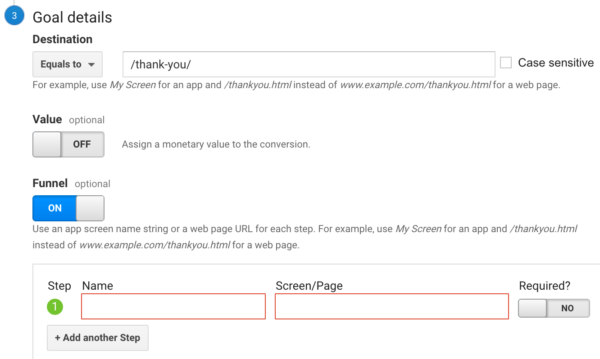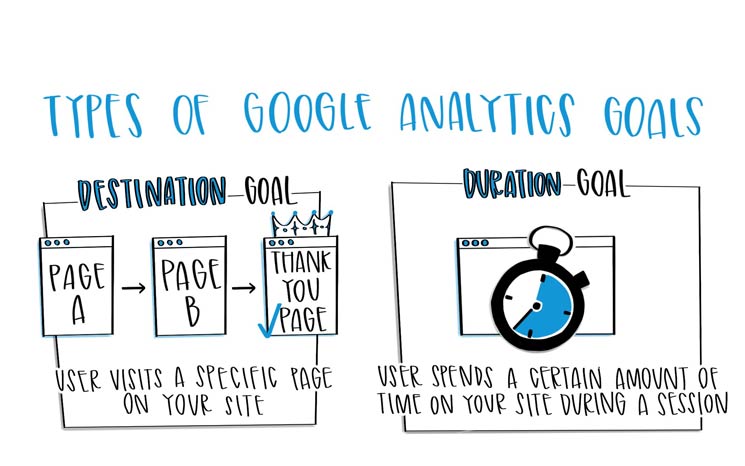Discovering What Data Is Google Analytics Goals Unable to Track
Discovering What Data Is Google Analytics Goals Unable to Track
Blog Article
Discover the Limitations of Google Analytics Goals: Introducing the Information Types That Remain Untrackable
As organizations increasingly depend on data-driven decision-making, understanding the restrictions of devices like Google Analytics becomes critical. While Google Analytics Goals deal important insights into customer interactions, there exist data types that elude tracking, positioning challenges to a comprehensive understanding of individual habits.
Insufficient Individual Trip Tracking
Insufficient customer trip monitoring within Google Analytics can prevent the capacity to accurately evaluate individual habits. When the customer trip is not completely tracked, there are spaces in the data that stop a comprehensive understanding of how individuals engage with a website. This absence of understanding can bring about missed out on possibilities for optimization and renovations to the user experience.
One typical problem with insufficient individual journey monitoring is the failure to see the complete course that users take in the past completing a goal or leaving the website. Without this details, it is testing to recognize where individuals might be encountering challenges or friction points that avoid them from converting. Furthermore, insufficient tracking can cover the influence of specific marketing efforts or internet site changes on user behavior.
To resolve this constraint, it is important to establish correct tracking devices within Google Analytics to record the entire customer journey. This might include setting up occasion monitoring, objective funnels, or utilizing devices like Google Tag Supervisor to make certain that no crucial communications go unrecorded. By getting a thorough view of the customer trip, website owners can make even more enlightened choices to enhance customer involvement and drive conversions.
Acknowledgment Challenges
Browsing through attribution difficulties in Google Analytics calls for a detailed understanding of exactly how various touchpoints contribute to the general conversion procedure. Attribution difficulties occur from the intricacy of contemporary client journeys, where individuals connect with multiple networks before converting. Google Analytics supplies numerous attribution versions like very first touch, last touch, and linear, each using a various perspective on just how credit score is designated to touchpoints along the conversion course. These designs might not constantly accurately reflect the true effect of each touchpoint on the conversion.
One common attribution difficulty is the trouble in associating conversions to the right resource, specifically in instances where customers connect with numerous networks prior to converting. This can lead to errors in establishing which marketing initiatives are driving the most conversions. Furthermore, cross-device monitoring positions another attribution obstacle, as customers frequently switch in between gadgets during their trip, making it testing to track their interactions flawlessly. Online marketers must thoroughly translate and analyze acknowledgment information to make informed choices and optimize their marketing approaches properly.
Offline Conversions
Offered the challenges related to attributing conversions precisely in online channels, the measurement of offline conversions offers a considerable chance for marketers looking for an extra comprehensive understanding of their customers' journey. Offline conversions refer to activities that consumers take in the physical world, such look at more info as making purchases in brick-and-mortar stores or over the phone, participating in occasions, or engaging with published products - what data is google analytics goals unable to track. These conversions are critical for businesses that run both online and offline, as they offer useful understandings into the efficiency of marketing campaigns across numerous touchpoints
Tracking offline conversions typically postured a significant obstacle for online marketers, as it was challenging to link these activities back to specific online communications accurately. With innovations in technology, such as the assimilation of CRM systems, one-of-a-kind identifiers, and coupon codes, companies can now bridge the void in between online and offline data to acquire a more alternative sight of consumer habits. By properly determining offline conversions, marketers can enhance their approaches, designate resources extra efficiently, and inevitably improve the total customer experience.
Cross-Device Tracking
Cross-device monitoring plays an important function in comprehending the interconnected nature of customers' digital communications throughout multiple tools. In today's omnichannel world, where individuals perfectly switch over in between smart devices, tablets, and desktop computers, tracking their habits across these devices is necessary for marketing professionals to obtain a detailed sight of their client journey.

Moreover, privacy issues and policies such as GDPR and CCPA have even more difficult cross-device monitoring. With customers requiring more control over their data and boosted restrictions on tracking innovations, marketing professionals should discover privacy-compliant and ingenious methods to attach individual communications throughout gadgets.
Dynamic Material Engagement
Understanding customer involvement with vibrant web content is essential in enhancing electronic advertising techniques for improved audience interaction. Dynamic content describes site aspects that alter based upon individual actions, choices, or various other elements, offering an individualized experience. Tracking user communications with dynamic content postures challenges for conventional analytics devices like Google Analytics.
While Google Analytics can track standard interactions like clicks and web page sights, it might struggle to record more nuanced engagements within vibrant content. what data is google analytics goals unable to track. Metrics such as time invested in specific dynamic elements, float activities, or communications within pop-ups are typically not conveniently measurable making use of typical tracking approaches. This limitation hinders marketers' capability to fully comprehend just how customers are engaging with vibrant content and tailor their approaches as necessary

Final Thought
To conclude, Google Analytics objectives have limitations in tracking incomplete customer journeys, associating conversions precisely, catching offline conversions, tracking cross-device communications, and determining vibrant web content interaction. These constraints highlight the value of checking out additional monitoring approaches and tools to obtain a much more comprehensive understanding of user behavior and conversions past what Google Analytics can supply.
While Google Analytics Goals offer valuable understandings into individual communications, there exist information kinds that thwart monitoring, posturing difficulties to a detailed understanding of customer habits.Insufficient user journey monitoring within Google Analytics can prevent the ability to accurately analyze user actions. When the customer journey is not completely tracked, there are spaces in the data that protect against a detailed understanding of how customers interact with a web site.One typical problem with incomplete individual you can try here trip tracking is the failure to see the full path that customers take previously completing a goal or leaving the site. By obtaining a comprehensive sight of the individual journey, internet site owners can make even more educated decisions to enhance customer interaction and drive conversions.
Report this page